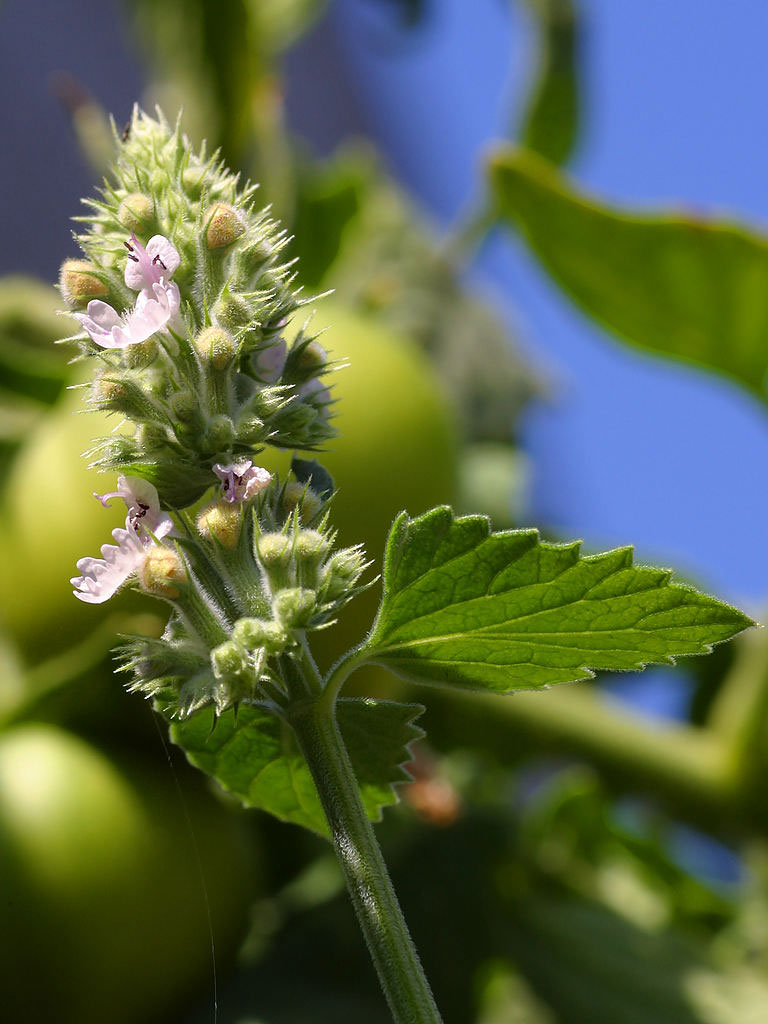Catnip, or cat mint
(Nepeta cataria), a perennial herb of the natural order Labiatæ. The popular name is in allusion to the attraction the plant has for cats. They not only eat it, but rub themselves upon it purring with delight. The generic name is derived from the Etrurian city Neptic, in the neighborhood of which various species of the genus formerly became prominent.
Like several of its relatives catnip is a well-known weed. It has become naturalized in America, and is most frequently observed in dry, waste places, especially in the East, though it is also often found in gardens and around dwellings throughout the United States and Canada.
Description: Its erect, square, branching stems, from 18 to 36 inches tall, bear notched oval or heartshaped leaves, whitish below, and during late summer terminal clusters of white flowers in small heads, far apart below, but crowded close above. The fruits are small, brown, ovoid, smooth and with three clearly defined angles. An ounce contains about 3,400 seeds. Viability lasts for five years.
Cultivation: Catnip will grow with the most ordinary attention on any fairly dry soil. The seed need only be sown in autumn or spring where the plants are to remain or in a nursery bed for subsequent transplanting. If to be kept in a garden bed they should stand 18 to 24 inches apart each way. Nothing is needful except to keep down weeds in order to have them succeed for several years on the same spot.
Uses: The most important use of the plant is as a bee forage; for this purpose waste places are often planted to catnip. As a condiment the leaves were formerly in popular use, especially in the form of sauces; but milder flavors are now more highly esteemed. Still, the French use catnip to a considerable extent. Like many of its relatives, catnip was a popular medicinal remedy for many fleshly ills; now it is practically relegated to domestic medicine. Even in this it is a moribund remedy for infant flatulence, and is clung to only by unlettered nurses of a passing generation.


